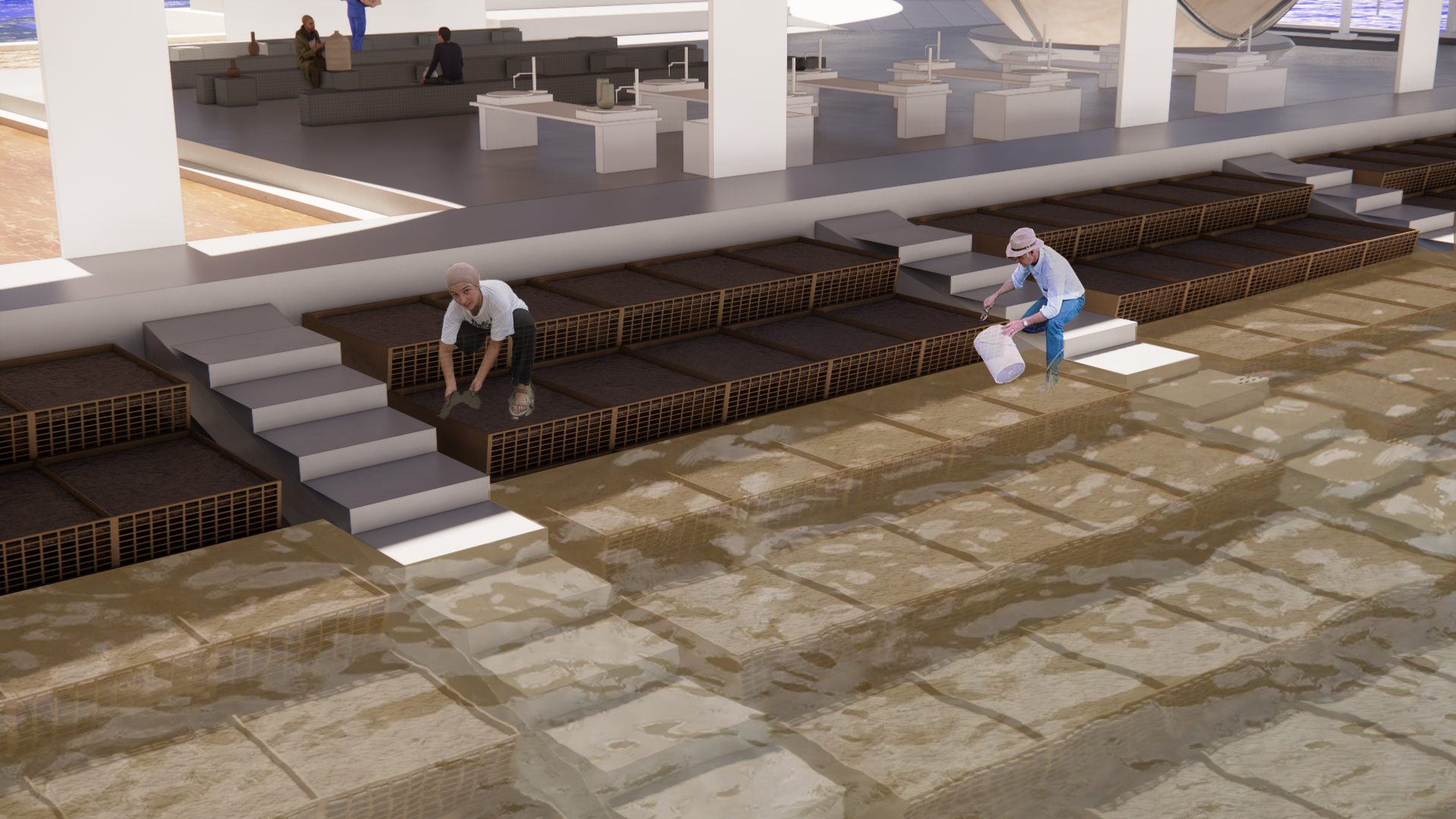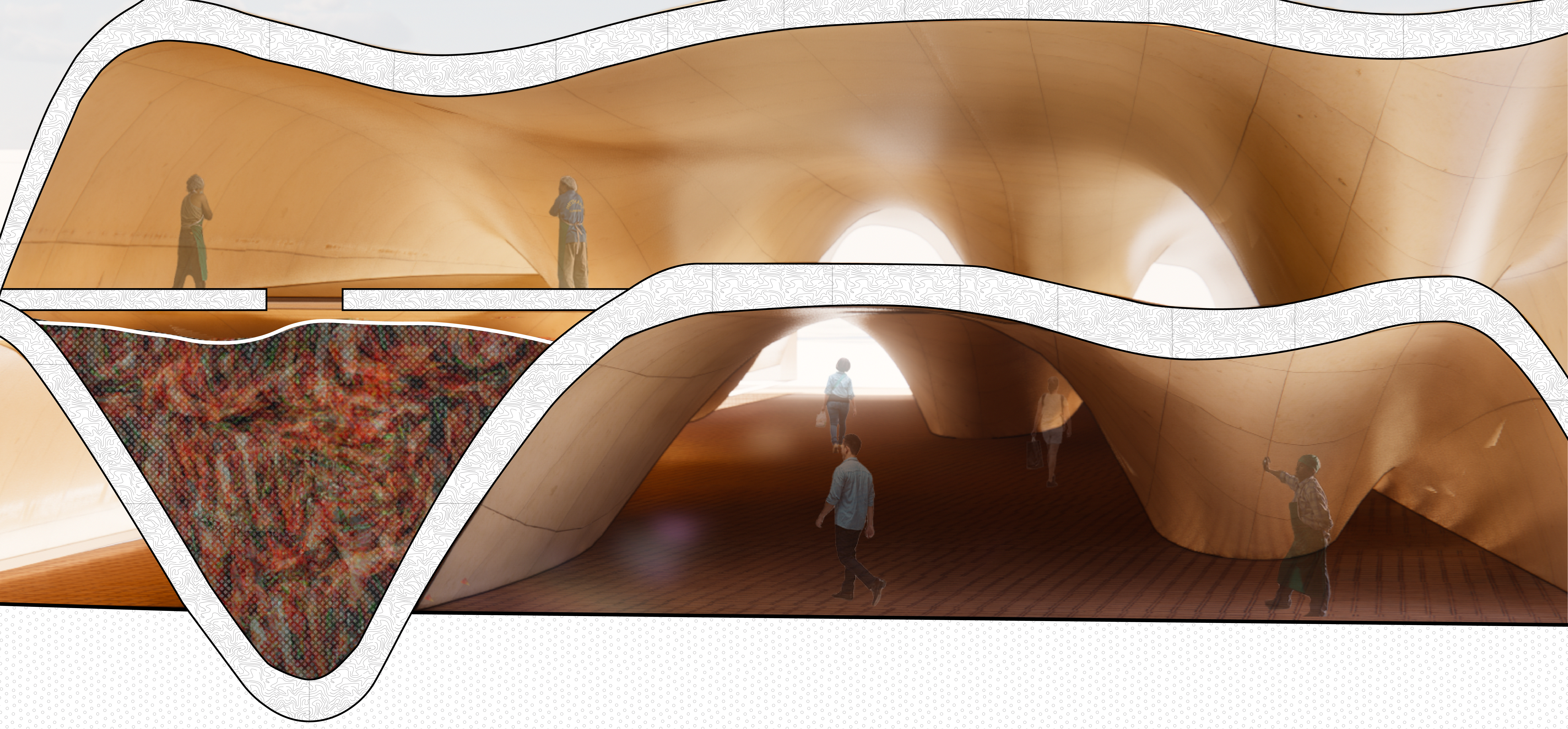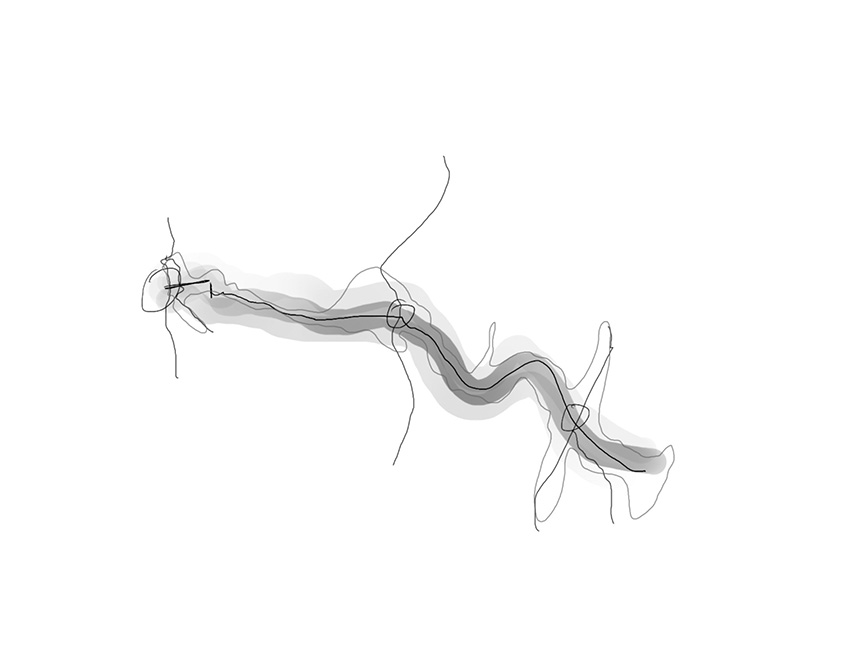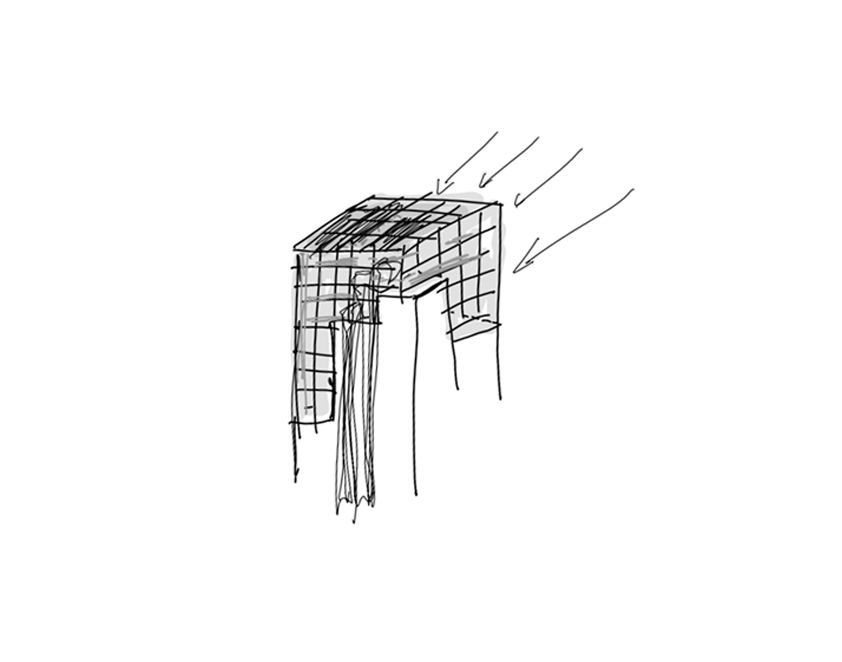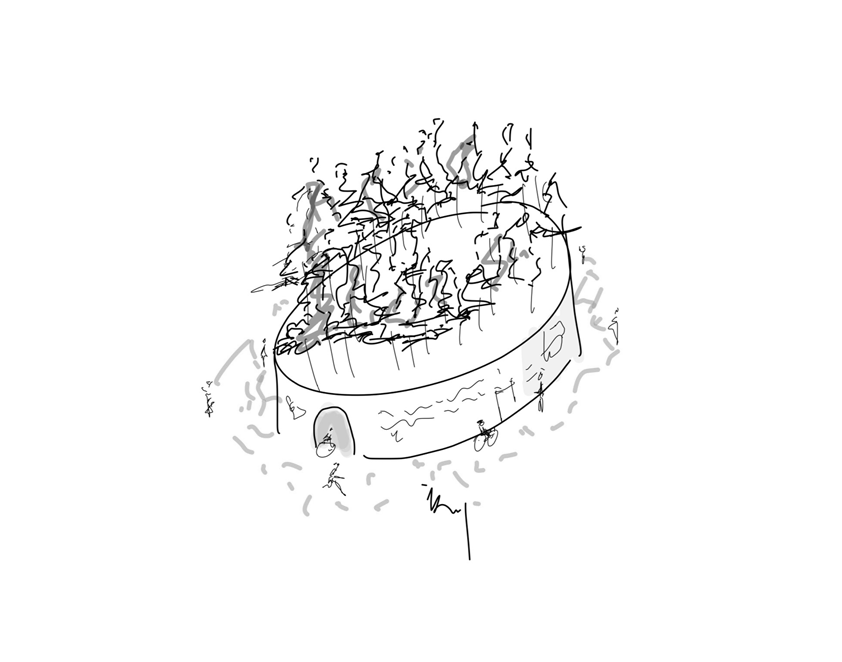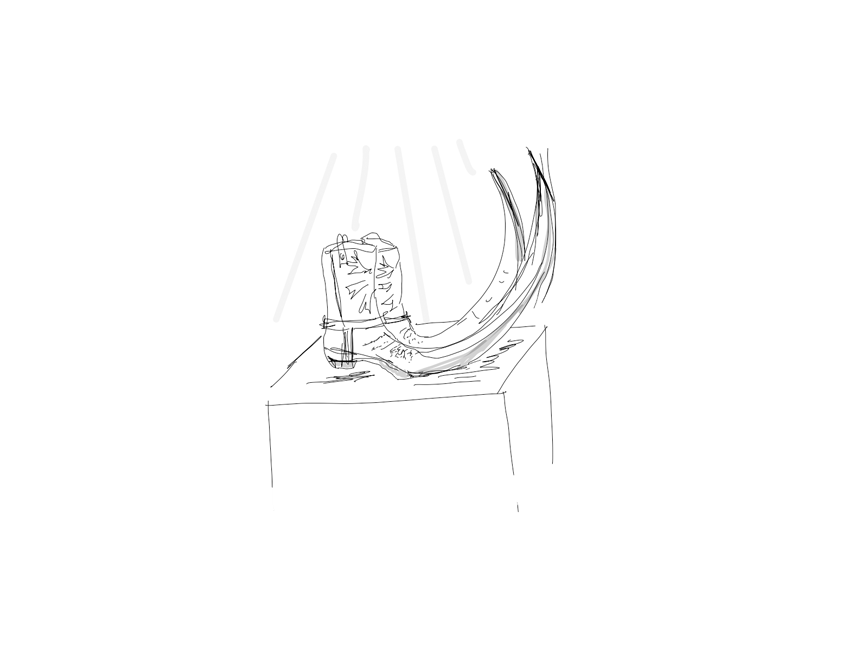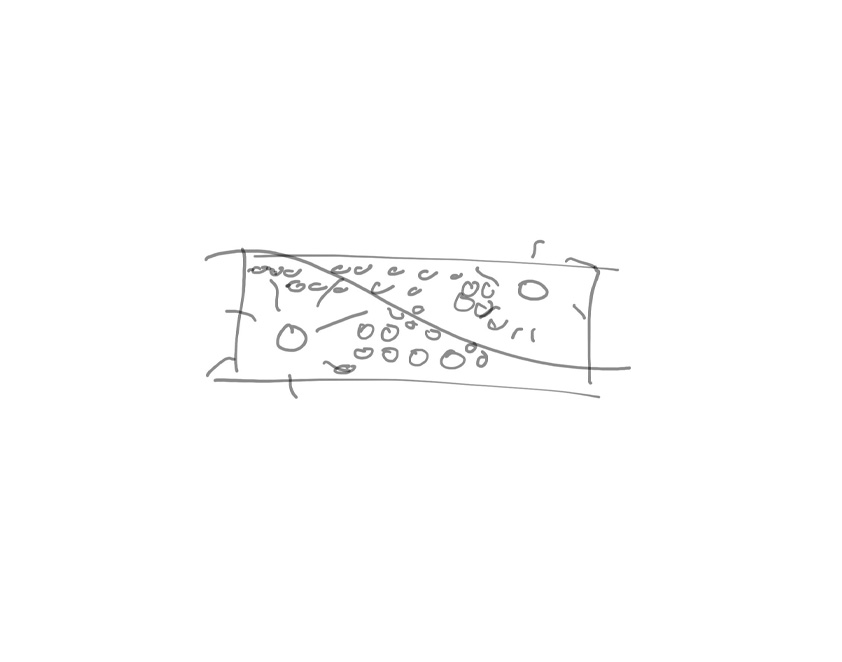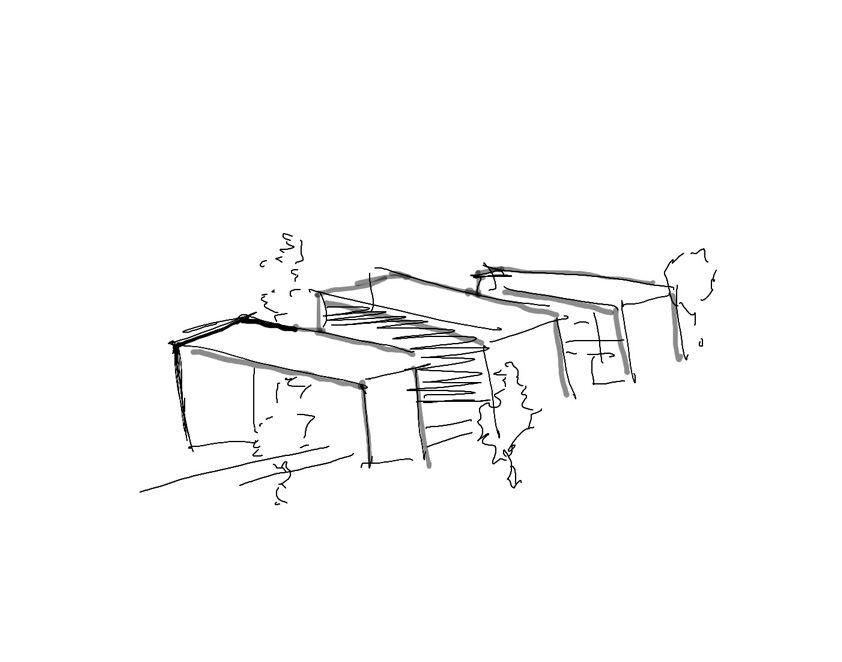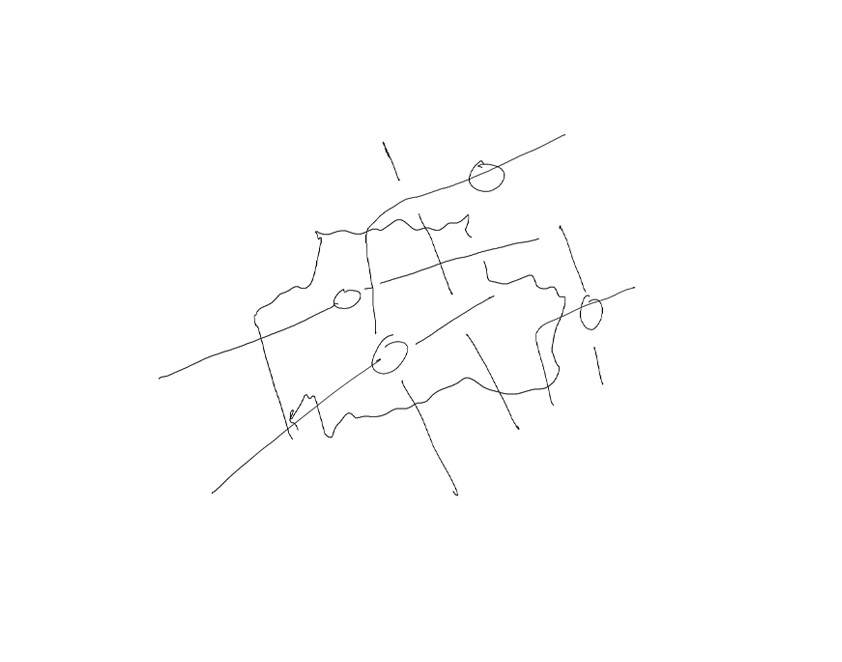Guillermo Garza is a Mexican-American designer in Brooklyn, New York
He obtained a B.A in Architecture at Pratt Institute, with a Minor in Museum and Gallery Studies .

Han River Habitat
★ Picked to be exhibited in the primary exhibition
at the 2023 Seoul Biennale ★
Pratt Institute
Professor: Mark Rakatansky
Team: Aura Wang, Alyssa Conde
Spring 2023
Urban Planing
Rhino, Enscape, Photoshop, Indesign, Illustrator
![]()
★ Picked to be exhibited in the primary exhibition
at the 2023 Seoul Biennale ★
Pratt Institute
Professor: Mark Rakatansky
Team: Aura Wang, Alyssa Conde
Spring 2023
Urban Planing
Rhino, Enscape, Photoshop, Indesign, Illustrator

The Han River Habitat is a unique cohabitation environment centered around two core aspects: the living conditions of diverse species, and immersive Korean cultural experiences. Situated between the urban fabric in the south and the natural environment in the north, this habitat fosters a shared community where all species can thrive amidst the riverside's natural conditions and human-built structures. Visitors can engage in pottery making, food cultivation, and communal dining, experiencing the cultural influence of Korean pottery and cuisine. By promoting a slower pace of life through pedestrian and bicycle systems, along with sustainable transportation like light rail trains, the habitat aims to create a living-friendly environment with reduced vehicle traffic and pollution. It aspires to realize a future vision of harmonious co-living in Seoul, offering enriching Korean cultural encounters within the urban landscape.
The habitat's design prioritizes a balanced living environment for both human and non-human inhabitants, facilitating cross-species interactions and providing essential resources such as food, movement, and shelter. Wetlands offer nesting spaces and feeding grounds for birds like Magpies and black-headed gulls, along with shelter for catfish and endangered Eurasian Otters. Human residents, including workers, college students, and habitat practitioners, benefit from dedicated walking paths for exercise and recreation, providing a sanctuary away from the bustling city. Roads and metros are tunneled beneath the wetlands to minimize disruption to non-human species and reduce noise pollution. With construction materials like porous clay and rammed earth platforms, water movement is enabled, delivering vital river nutrients to the ecosystem and fostering native plant growth, aiding in erosion control and water filtration.
The habitat's sustainability extends to agricultural practices, featuring greenhouses that cultivate diverse plants, including vegetables, fruits, and grains. Clay collection zones allow residents to gather material from the Han River and participate in traditional and modern workshops, enriching their artistic and utilitarian knowledge across generations. The integrated living and production system culminates in vibrant places of exchange, including fish markets, produce markets, and food distribution centers, strategically located at intersections of production, habitation, and circulation zones, reinforcing the habitat's self-reliant and cross-responsive urban life approach. The Han River Habitat emerges as a model for an inclusive, sustainable, and harmonious urban ecosystem, embracing all species calling the Han River their home.
[en español]
The habitat's design prioritizes a balanced living environment for both human and non-human inhabitants, facilitating cross-species interactions and providing essential resources such as food, movement, and shelter. Wetlands offer nesting spaces and feeding grounds for birds like Magpies and black-headed gulls, along with shelter for catfish and endangered Eurasian Otters. Human residents, including workers, college students, and habitat practitioners, benefit from dedicated walking paths for exercise and recreation, providing a sanctuary away from the bustling city. Roads and metros are tunneled beneath the wetlands to minimize disruption to non-human species and reduce noise pollution. With construction materials like porous clay and rammed earth platforms, water movement is enabled, delivering vital river nutrients to the ecosystem and fostering native plant growth, aiding in erosion control and water filtration.
The habitat's sustainability extends to agricultural practices, featuring greenhouses that cultivate diverse plants, including vegetables, fruits, and grains. Clay collection zones allow residents to gather material from the Han River and participate in traditional and modern workshops, enriching their artistic and utilitarian knowledge across generations. The integrated living and production system culminates in vibrant places of exchange, including fish markets, produce markets, and food distribution centers, strategically located at intersections of production, habitation, and circulation zones, reinforcing the habitat's self-reliant and cross-responsive urban life approach. The Han River Habitat emerges as a model for an inclusive, sustainable, and harmonious urban ecosystem, embracing all species calling the Han River their home.
[en español]



